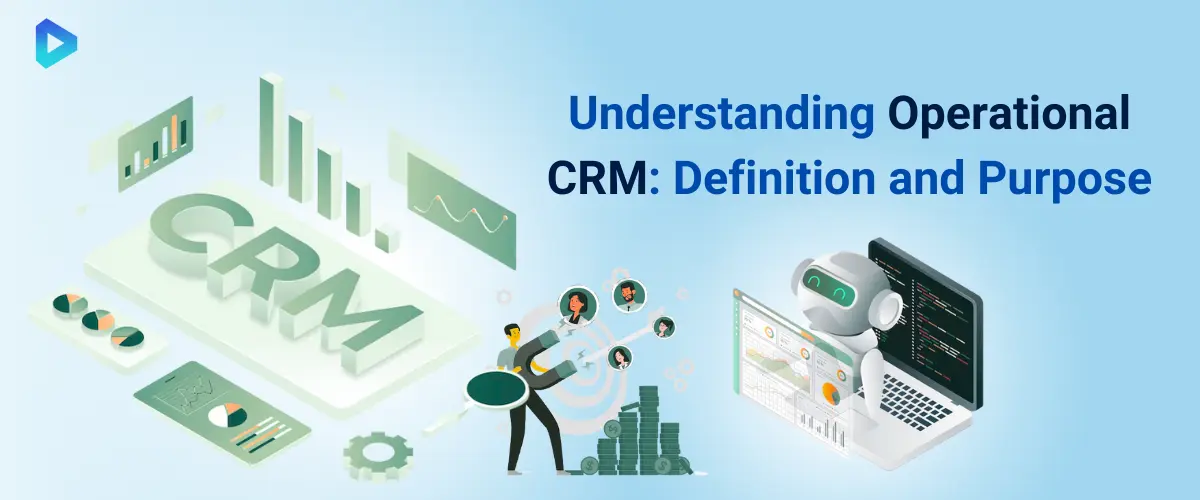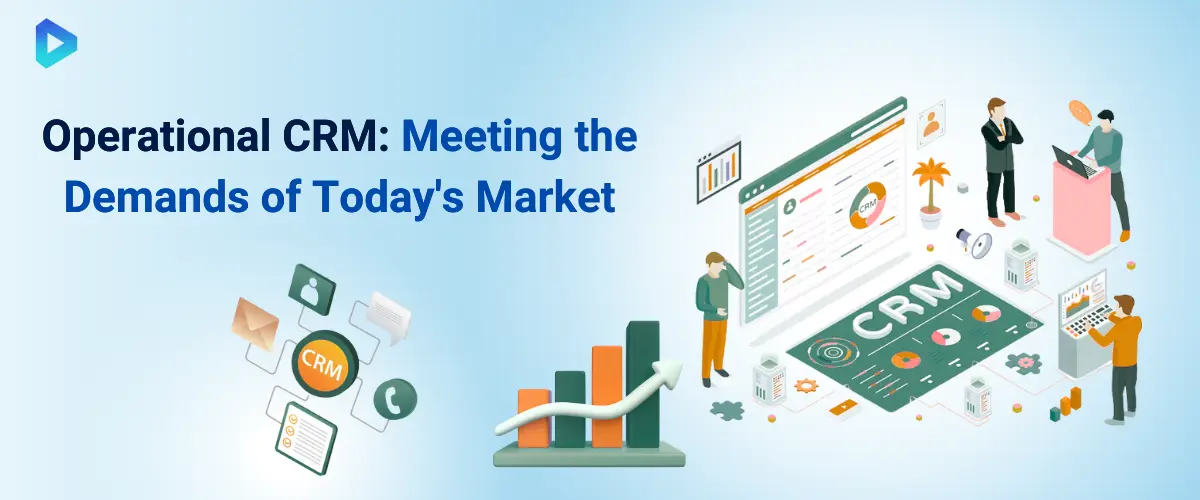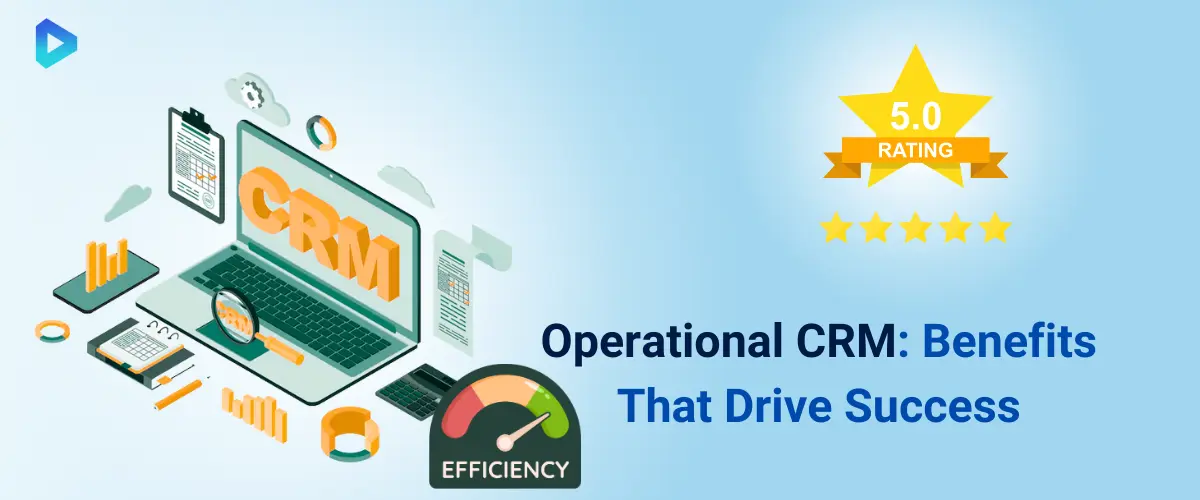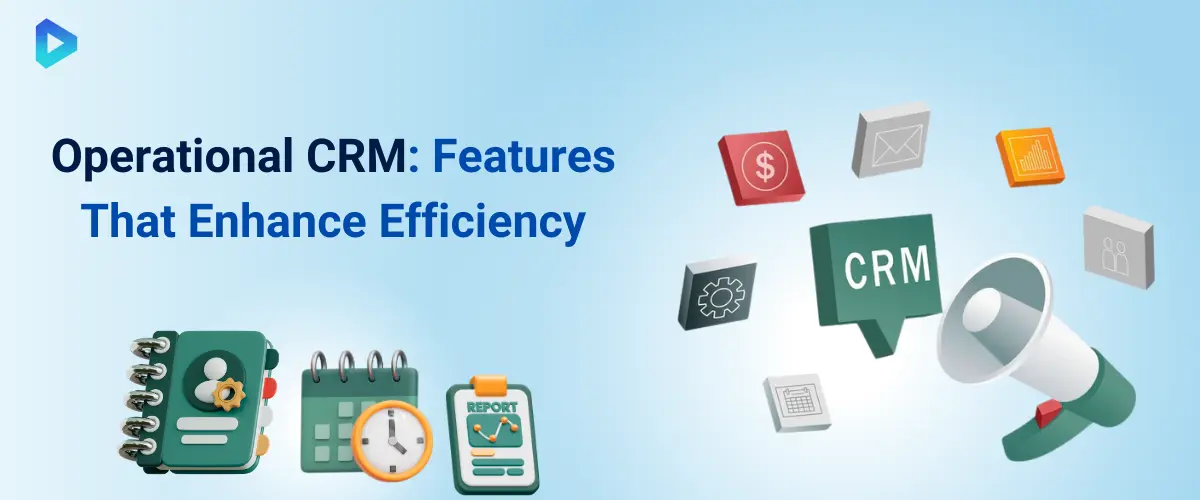
What Are Intelligent Agents in AI? Explained in a Simple Way

Published on: April 17, 2025 Crm
“Your call is important to us…” Cue endless hold music. If your customers hear this too often, they won’t stay customers for long. The fix? Operational CRM—a system that turns service nightmares into smooth, satisfying experiences. But what makes it different from a basic contact list? And how can it help your team? From AI-powered chatbots to automated ticket routing, we’ll show you the features that save time, reduce errors, and (most importantly) keep customers coming back. In this guide, we’ll break down the real benefits (like 30% faster response times), key features, and how companies just like yours are using it to boost satisfaction and sales. If you’re ready to ditch the chaos and impress clients, keep reading.

Operational CRM organizes customer interactions to boost satisfaction and streamline service.
Operational CRM is more than just software — it’s the bridge between companies and their customers. It handles day-to-day tasks like managing leads, organizing contacts, and tracking service requests.
Think of it as the heart of smooth, seamless communication. Operational CRM is your team’s command center for all customer touchpoints. It logs calls, emails, and purchases so nothing slips through the cracks.
Key functions:
Example: A bakery uses it to remember regulars’ favorite orders, making customers feel valued.
Not all CRMs are created equal, and operational CRM stands apart. While analytical CRM focuses on data and insights, operational CRM takes action. It automates workflows, schedules customer interactions, and manages sales, service, and marketing activities.
Unlike collaborative CRMs, which emphasize communication across teams, operational CRM focuses on execution. While analytical CRM studies data and strategic CRM plans campaigns, operational CRM does the daily work. It’s the difference between:
A car dealership’s operational CRM reminds sales reps to call leads, while analytical CRM predicts which leads will convert.
A clear understanding of CRM avoids confusion and wasted effort. When you know exactly what operational CRM does, you can align it with your business goals.
It’s about improving relationships, not just managing data. Mislabeling your CRM wastes time and money. True operational CRM:
A confused retailer bought analytical CRM tools but needed operational ones to speed up service, costing them 6 months of frustration.

Operational CRM isn't just software—it's your secret weapon for happier customers and smoother operations.
Customer service teams drown in scattered emails, forgotten follow-ups, and frustrated clients. Operational CRM throws them a lifeline by automating the chaos. It tracks every interaction, sets reminders for critical tasks, and alerts teams when customers need attention.
Key fixes:
Real impact: A mid-sized law firm reduced client complaints by 65% after implementing CRM-driven workflow automation. Their paralegals now spend less time hunting for emails and more time building relationships.
Nothing burns customer trust faster than repeating your story to multiple reps. Operational CRM acts as a universal translator across departments. Sales sees support tickets, support views purchase history, and everyone stays aligned.
How it works:
After a regional bank implemented this, their customer satisfaction scores jumped 40 points. Clients finally felt heard, not passed around.
Today's customers expect service that remembers them. Operational CRM transforms generic interactions into "Wow, they get me" moments by leveraging every touchpoint.
Personalization powers:
A cosmetic brand saw email open rates double after using CRM data to tailor product recommendations based on past purchases and skin types.

Operational CRM delivers game-changing advantages that directly impact your bottom line and customer happiness.
Customers today expect lightning-fast responses. Operational CRM cuts wait times by organizing all communications in one place and automating initial replies.
Key improvements:
Example: An e-commerce store reduced response time from 12 hours to 15 minutes, earning them "Top Rated Seller" status.
Say goodbye to manual data entry and follow-up reminders. Operational CRM handles the grunt work so your team can focus on real relationships.
Time-saving features:
A property management company reclaimed 20 hours per week by automating tenant communication and maintenance requests.
Personalized care keeps customers coming back. Operational CRM remembers every interaction, allowing for tailored service that builds loyalty.
Retention strategies:
Case study: A pet food subscription service used CRM data to personalize deliveries, reducing cancellations by nearly a third.

Operational CRM works wonders, but it's not magic—here's what it can't do for you.
While operational CRM streamlines daily tasks, it has blind spots you should know about. It's like having a meticulous secretary who can't help with long-term planning. The system logs customer calls beautifully but won't predict next quarter's sales slump.
Key shortcomings:
Take "Bella's Boutique"—their CRM helped manage orders but couldn't analyze why winter coats sold poorly in December. They needed separate BI tools for insights.
There comes a point when operational CRM alone isn't enough. If you're sweating over spreadsheets to forecast demand or manually merging data from three systems, it's upgrade time.
Watch for these red flags:
"Thompson Builders" hit this wall when their CRM couldn't handle construction bid calculations. Adding estimating software saved 15 hours weekly.
The smart approach? Maximize what operational CRM does well while patching the gaps. Use it to automate service tickets and contact management, but bring in other tools for heavy lifting.
A balanced tech stack might include:
"SunnySide Clinics" uses this mix—their CRM handles appointments while specialized software manages HIPAA-compliant records. Result? 90% patient satisfaction with zero compliance headaches.

A great Operational CRM keeps your customer interactions smooth, efficient, and personal. Here are the features you can’t afford to miss.
A clunky contact system wastes time and frustrates teams. The best Operational CRMs store every customer detail—emails, calls, past purchases—in one searchable place. No more digging through spreadsheets or lost notes.
For example, a sales rep can prep for a call in seconds by reviewing past chats and purchase trends. No guesswork, just smarter conversations.
Missed deadlines and chaotic workflows kill productivity. A robust CRM automates the busywork so your team focuses on what matters—customers.
Imagine a support ticket auto-assigned to the right agent based on expertise. Or sales leads routed by region before they go cold. Efficiency without the headache.
Gut feelings don’t scale. Operational CRMs with sharp analytics turn raw data into actionable insights. Spot trends, predict churn, and measure what really impacts revenue.
For instance, a dip in repeat purchases might reveal a service gap. Or a spike in demo requests could signal the time to expand your sales team. Data you can use.

Behind every great CRM are powerful technologies that make customer management smarter and easier. Let's break down the key players.
Imagine a CRM that learns as you work. AI-powered CRMs analyze customer data to predict needs, automate responses, and even suggest next best actions. No more manual data entry or guessing games.
For example, an AI might notice a client hasn't reordered and automatically prompt your team to check in. It's like having a tireless assistant who knows your customers inside out.
Gone are the days of being chained to a desk. Cloud CRMs let your team access customer data from laptops, phones, or tablets—whether they're at home, on-site, or halfway across the world.
Picture a sales rep closing a deal from a coffee shop while support checks order history to solve a ticket—all in sync. Workflows that flex with your life.
Your CRM shouldn't live in a silo. The best platforms play nice with the tools you already use, creating a seamless workflow.
For instance, when your e-commerce platform updates a customer's order, your CRM instantly notifies the right team member. Less busywork, more meaningful connections.
If keeping your customers happy is your business goal, Operational CRM should be at the core of your strategy. This blog takes you through the essentials, starting with a clear definition of Operational CRM and why understanding its purpose can reshape how you manage relationships. You’ll explore how it stands apart from other CRM types and why getting your CRM set up right from the start can save time, money, and customer trust.